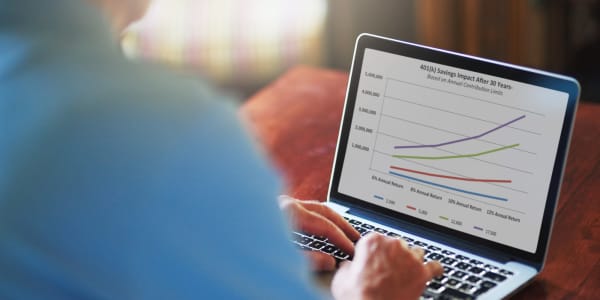For the 157 million Americans who carry a balance on their credit cards, Wednesday's Fed action is bad news.
With credit card debt rising steadily, the quarter-percentage-point increase in the federal funds rate will cost consumers roughly $1.6 billion in extra finance charges in 2017, according to a WalletHub analysis.
"The cumulative effect of interest rate hikes is going to begin mounting," said Greg McBride, Bankrate.com's chief financial analyst, particularly on variable-rate loans such as credit cards, home equity lines of credit and adjustable-rate mortgages, which could rise within one to two statement cycles.

Most credit cards these days have a variable rate, which means there's a direct connection to the Fed's benchmark rate. The quarter-percentage-point rate hike means you'll pay an extra $2.50 a year for every $1,000 of debt, according to NerdWallet.
The Fed's increase is likely to raise the amount the average household pays in credit card interest to $1,350 from $1,333 a year, NerdWallet said (assuming the average credit card APR jumps to 19.61 percent from 19.36 percent).
While a $17 increase doesn't seem like an emergency, "these rates are expected to continue to rise, and each change adds up and increases your debt burden," said Sean McQuay, Nerdwallet's credit card associate. However, there's still time to consider a zero interest balance transfer offer and make aggressive steps toward paying down your high-interest debt once and for all.
And while you're at it, here's a breakdown of what to do about your savings account, mortgage and car loan as well:
Mortgages
The economy, the Fed and inflation all have some influence over long-term fixed mortgage rates, which generally are pegged to yields on U.S. Treasury notes, so there's already been a creep up from record-low levels since the election and well before the Fed has made any official move.
The average 30-year fixed-rate mortgage is now about 4.38 percent — steadily moving further from the record low of 3.50 percent in December 2012.
With interest rates rising, adjustable-rate mortgages will certainly be heading higher too and those with an ARM "are a sitting duck for a big increase," McBride said.
One option to consider is refinancing.
More from Balancing Priorities:
What to do with your bond portfolio as Fed rates rise
Credit scores are set to rise
Don't make these money mistakes when you're just starting out
"There is no sense in bearing the risk of an adjustable rate when you can lock in a fixed rate at essentially the same level," he said.
Many homeowners with adjustable rate home equity lines of credit, which are pegged to the prime rate, also will be affected. But unlike an adjustable-rate mortgage, these loans reset immediately rather than once a year.
For example, a rate increase of 25 basis points would cause borrowers with a $50,000 HELOC to see a $10 to $11 increase in their next monthly payment, according to Mike Kinane, senior vice president of consumer lending at TD Bank.
While that's not a big change, those worried about the escalation of rates can often convert the balance into a fixed-rate option at any time, Kinane said.
Auto loans
For those planning on purchasing a new car in the next few months, this rate change likely will not have any material effect on what rate you get. A quarter-percentage-point difference on a $25,000 loan is $3 a month, according to Bankrate's McBride.
"Nobody is going to have to downsize from the SUV to the compact because of rates going up," he said.
What will affect what kind of car you can afford is checking that your credit is in good shape, negotiating the price of your vehicle and shopping around to secure the best rate on your financing. "Don't lose sleep over interest rates," he said.
The average five-year new car loan rate is 4.36 percent and the average four-year used car loan rate is 5.05 percent.
Savings
Stashing some cash in a savings account has yielded not very much, aside from peace of mind, and that's not likely to change. The average interest rate on a savings account is about 0.11 percent right now, according to Bankrate, and even with the Fed rate hike, banks may not pass on any of that increase to their customers, which means interest on deposits will remain near rock bottom.
Banks' terms allow them to be slower to raise rates on savings products than they are on loans and credit cards, according to Nick Clements, co-founder of MagnifyMoney.com.
Rather, "check online savings accounts, community banks or credit unions, often you can pick up an additional full percentage point that way," McBride said.
That will add up. An account paying 1.10 percent in interest earns about $275 more per year than an account with a rate of 0.01 percent on savings of $25,000, according to NerdWallet.
Student loans
Federal student loan rates are fixed, so most borrowers won't be impacted immediately by a rate hike. But if you have a private loan, those loans may be fixed or have a variable rate tied to the Libor, prime or T-bill rates — which means that as the Fed raises rates, borrowers will likely pay more in interest, although how much more will vary by the benchmark.
"If the federal funds rate rises by 25 basis points, one can expect the interest rates on variable loans would increase by the same amount," said Stephen Dash, CEO of Credible.com, an online marketplace for lenders that offer student loan refinancing.
While most borrowers have Federal student loans, many others have a mix of federal and private loans and nearly a quarter, or 24 percent, of student loan borrowers don't know the difference between fixed- and variable-rate loans, according to Credible.
That makes this a particularly good time identify the loans you've got and see if refinancing into a fixed rate makes sense, Dash said. "There still exists a very meaningful savings opportunity."
(Correction: The original story had the wrong figure for the impact of the rate increase for each $1,000 in debt.)





